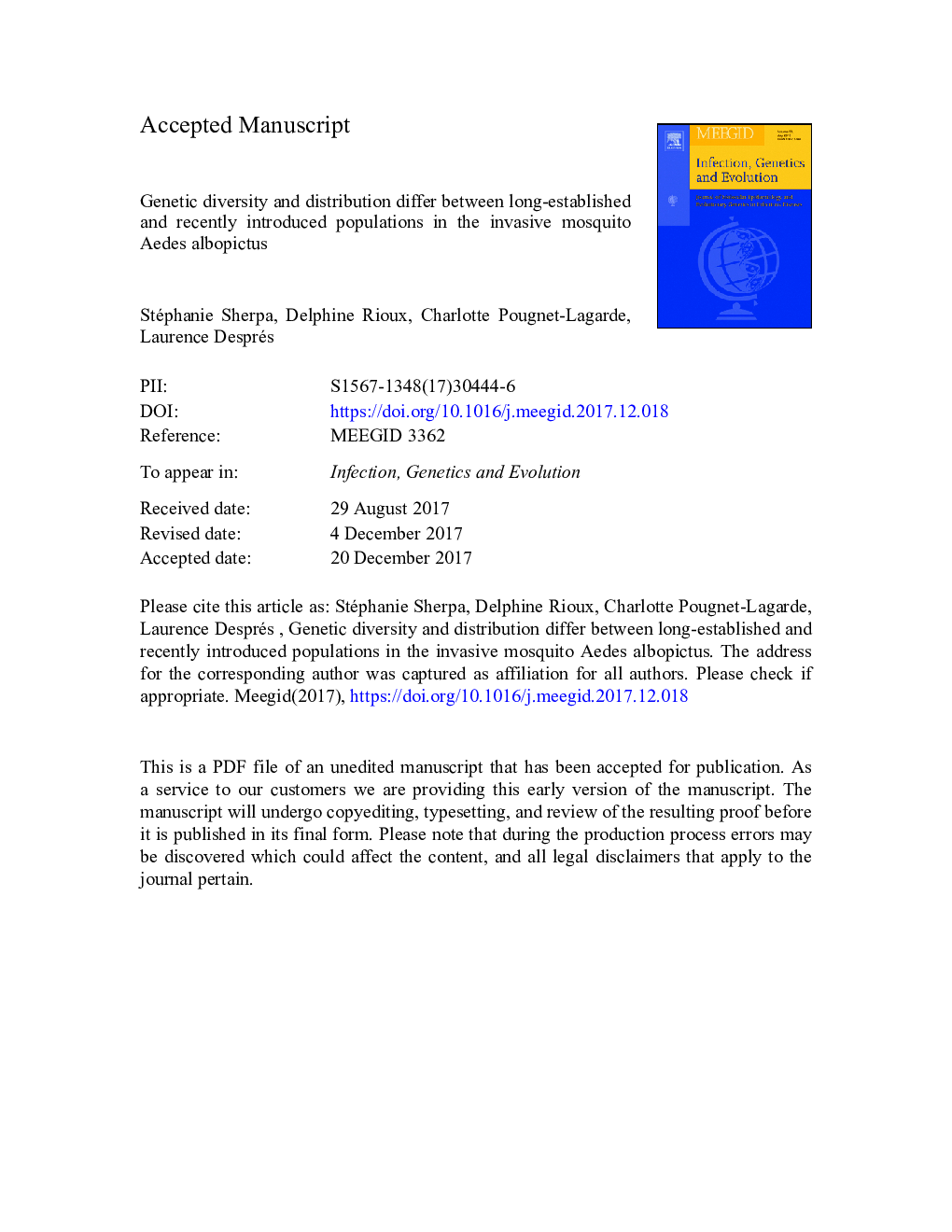| Article ID | Journal | Published Year | Pages | File Type |
|---|---|---|---|---|
| 8646971 | Infection, Genetics and Evolution | 2018 | 42 Pages |
Abstract
The Asian tiger mosquito Aedes albopictus, native to South-eastern Asia, is currently the most invasive mosquito in the world. The spatio-temporal dynamics of its expansion through the genetic characterization of invasive populations has been challenged so far by the limited number of genetic markers variable enough to infer the genetic structure in recently invaded areas. Here we applied the double-digest Restriction-site Associated DNA sequencing method (ddRADseq) to mosquitoes collected in two invaded areas, Reunion Island (12 localities) and Europe (18 localities). Analyses of genetic diversity, Bayesian clustering, Maximum Likelihood inference and isolation-by-distance tests based on 1561 genome-wide distributed Single Nucleotide Polymorphisms (SNPs) revealed that Reunion Island and Europe form two distinct genetic clusters, supporting no contemporary gene flow and suggesting two different and independent invasion histories. Long-established populations (Reunion Island) were more genetically diverse than recently introduced European populations. The largest part of genetic variance was found at the intra-individual level (>Â 85%) and most FIS values were positive, suggesting inbreeding at the local scale. The two invaded areas showed contrasting patterns of genetic structure. Significant isolation-by-distance was found among Reunion Island populations, suggesting that these populations are at the drift-migration equilibrium. In contrast, long-distance human-assisted transport is probably the main dispersal mechanism in Europe.
Related Topics
Life Sciences
Agricultural and Biological Sciences
Ecology, Evolution, Behavior and Systematics
Authors
Stéphanie Sherpa, Delphine Rioux, Charlotte Pougnet-Lagarde, Laurence Després,
